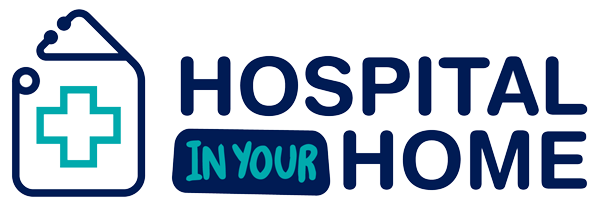
The Digital Lifeline: How Technology is Transforming Chronic Care Management
Chronic diseases like diabetes, heart disease, and arthritis affect millions worldwide, demanding constant monitoring and proactive management. Traditionally, this meant frequent doctor’s visits, paper-based records, and limited real-time insights. However, the rise of technology is revolutionizing chronic care, empowering patients and healthcare providers alike. Let’s explore the key roles devices and apps are playing in this transformation.
1. Remote Patient Monitoring (RPM): Bridging the Gap
RPM devices allow healthcare providers to track patients’ vital signs and health data remotely. This eliminates the need for frequent in-person visits, especially for patients with mobility issues or those residing in remote areas.
- Wearable Sensors: Smartwatches and fitness trackers monitor heart rate, blood pressure, sleep patterns, and activity levels. These devices provide continuous data streams, enabling early detection of potential health issues.
- Glucose Monitors: For diabetes management, continuous glucose monitors (CGMs) and smart glucose meters provide real-time blood sugar readings, eliminating the need for frequent finger pricks.
- Blood Pressure Monitors: Connected blood pressure cuffs transmit readings directly to healthcare providers, facilitating timely adjustments to medication and treatment plans.
- Smart Inhalers: For respiratory conditions like asthma, smart inhalers track medication usage and environmental triggers, helping patients manage their symptoms effectively.
2. Mobile Health Apps (mHealth): Empowering Patients
mHealth apps are transforming patients into active participants in their own care.
- Medication Management: Apps remind patients to take medications, track adherence, and provide information about potential drug interactions.
- Symptom Tracking: Patients can log symptoms, pain levels, and other relevant data, providing valuable insights for healthcare providers.
- Lifestyle Management: Apps offer personalized coaching, educational resources, and tools for tracking diet, exercise, and stress levels.
- Telehealth Platforms: Apps facilitate virtual consultations with healthcare providers, enabling remote diagnosis, treatment, and follow-up care.
- Data Sharing: Many apps allow patients to securely share their health data with their care team, fostering better communication and collaboration.
3. Data Analytics and AI: Personalized Insights
The vast amounts of data generated by devices and apps can be analyzed using artificial intelligence (AI) and machine learning (ML) to provide personalized insights and predictive analytics.
- Risk Stratification: AI algorithms can identify patients at high risk for complications, enabling proactive interventions.
- Personalized Treatment Plans: Data analytics can help tailor treatment plans to individual patient needs and preferences.’Predictive Analytics: AI can predict future health events, such as hospital readmissions, allowing for timely preventative measures.
4. Enhanced Communication and Collaboration
Technology facilitates seamless communication and collaboration between patients, healthcare providers, and caregivers.
- Patient Portals: Secure online platforms allow patients to access their medical records, communicate with their care team, and schedule appointments.
- Messaging Platforms: Secure messaging apps enable real-time communication between patients and healthcare providers.
- Caregiver Coordination: Apps facilitate communication and information sharing among caregivers, ensuring coordinated care.
Challenges and Considerations
While technology offers immense potential, it’s crucial to address certain challenges:
- Data Privacy and Security: Protecting sensitive patient data is paramount.
- Digital Literacy: Ensuring equitable access and usability for all patients, regardless of their technological skills, is essential.
- Integration and Interoperability: Seamless integration of different devices and platforms is crucial for efficient data sharing and analysis.
- Cost and Accessibility: Ensuring affordability and accessibility of these technologies for all populations.
- Clinician buy-in: Healthcare providers need to be trained and willing to use these technologies.
The Future of Chronic Care
Technology is poised to play an even greater role in chronic care management in the future. Advancements in AI, wearable sensors, and telemedicine will enable more personalized, proactive, and patient-centered care. By embracing these technologies, we can improve the lives of millions living with chronic diseases.
Sources:
- “The Role of Mobile Health Apps and Wearable Devices in the Management of Chronic Diseases.” Journal of Medical Internet Research, 2018. https://www.jmir.org/2018/12/e12959/
- “Remote Patient Monitoring: A Practical Guide for Clinicians.” American Family Physician, 2021. https://www.aafp.org/pubs/afp/issues/2021/0615/p743.html
- “Artificial intelligence in chronic disease management: a scoping review.” Journal of Personalized Medicine, 2021. https://www.mdpi.com/2075-4426/11/11/1183
- “Digital Health Technologies for Chronic Disease Management and Prevention.” National Academy of Medicine, 2020. https://nam.edu/digital-health-technologies-for-chronic-disease-management-and-prevention/
- “The Role of Technology in Chronic Disease Management.” HealthITAnalytics, 2023. https://healthitanalytics.com/features/the-role-of-technology-in-chronic-disease-management
